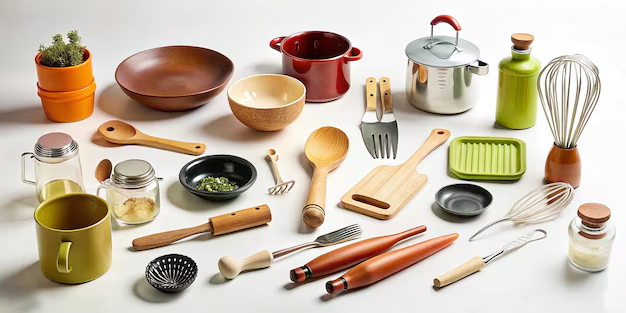Having the right knife for each cooking task can make a world of difference in the kitchen. Whether you’re chopping vegetables, filleting fish, or slicing meat, using the appropriate knife ensures precision, safety, and ease. With so many different types of knives available, it can be overwhelming to know which one to choose. Here’s a breakdown of how to select the right knife for every cooking task and make the most of your kitchen tools.
1. Chef’s Knife (The All-Purpose Workhorse)
Best for: Chopping, dicing, slicing, and mincing a wide variety of ingredients.
A chef’s knife is the most essential tool in any kitchen. Its broad, curved blade (usually 8-10 inches long) makes it versatile enough to handle most cutting tasks. Whether you’re chopping onions, slicing meats, or dicing vegetables, a chef’s knife can do it all. The curved edge allows for a smooth rocking motion, which enhances control and efficiency.
When to use:
- Chopping herbs, vegetables, and fruits
- Slicing meats and fish
- Mincing garlic or shallots
- Cutting through large fruits like melons or squashes
Tip: A good chef’s knife should feel comfortable in your hand and have a balanced weight. It should also be sharp for optimal precision.
2. Paring Knife (For Detailed Work)
Best for: Peeling, coring, trimming, and intricate cutting tasks.
A paring knife is small, typically 3-4 inches in length, with a sharp, pointed blade. It’s designed for detailed work that requires precision, such as peeling fruits, coring apples, and deveining shrimp. The compact size allows for great control in tasks where accuracy is key.
When to use:
- Peeling and coring fruits and vegetables (like apples, pears, or potatoes)
- Trimming small, delicate tasks like cutting away stems or seeds
- Cutting small garnishes or intricate shapes for plating
Tip: A paring knife is perfect for tasks that need close control and should feel like an extension of your hand. Make sure the blade is sharp to reduce the risk of slipping.
3. Serrated Knife (The Best for Cutting Through Tough Skins)
Best for: Cutting bread, tomatoes, and other foods with a hard exterior and soft interior.
A serrated knife has a jagged, tooth-like edge that makes it ideal for cutting through foods with a tough skin and soft interior, such as bread, tomatoes, and citrus fruits. The teeth grip the food and saw through it, providing a clean cut without crushing or squishing delicate foods.
When to use:
- Slicing bread, rolls, and baguettes
- Cutting through tomatoes or other soft fruits and vegetables
- Slicing through cakes and pastries without damaging them
Tip: Don’t use a serrated knife on meats, as it can tear the flesh. It’s best for tasks that require a saw-like action to cut through a tough exterior.
4. Boning Knife (For Meat and Poultry)
Best for: Removing bones from meat, poultry, and fish.
A boning knife typically has a narrow, flexible blade that allows you to cut around bones with precision. It’s designed for tasks like filleting fish, removing chicken bones, or deboning meat. The flexibility of the blade helps you get close to the bones and make clean cuts without wasting meat.
When to use:
- Deboning poultry (chicken, turkey, etc.)
- Filleting fish
- Removing bones from larger cuts of meat (such as pork chops or ribs)
Tip: A boning knife should be lightweight with a flexible blade. Look for one that feels comfortable when handling delicate tasks like filleting fish.
5. Santoku Knife (A Japanese All-Purpose Knife)
Best for: Chopping, slicing, and mincing with an emphasis on precision.
A Santoku knife is a Japanese-style all-purpose knife, similar to a chef’s knife but with a shorter, slightly more rigid blade (usually around 5-7 inches). It’s particularly useful for tasks that require fine chopping, slicing, and dicing. The flat edge of a Santoku knife allows for a straight-down cutting motion, making it ideal for precision cuts.
When to use:
- Slicing, dicing, and mincing vegetables
- Cutting meat and fish (especially boneless cuts)
- Chopping herbs or garlic
Tip: Santoku knives typically have a slightly curved edge and sometimes feature a “Granton edge” (small indentations along the side) to reduce friction, making it easier to cut through food without it sticking to the blade.
6. Utility Knife (For Mid-Size Tasks)
Best for: Slicing smaller vegetables, fruits, and meats that don’t require a chef’s knife.
A utility knife is a medium-sized knife (usually around 5-6 inches long) that sits between a chef’s knife and a paring knife. It’s a great all-rounder for everyday tasks like slicing fruits, cutting sandwich ingredients, or trimming meat. It’s smaller and more maneuverable than a chef’s knife but offers more versatility than a paring knife.
When to use:
- Slicing sandwiches, meats, and cheeses
- Cutting smaller vegetables or fruits
- Carving fruits like melons or slicing medium cuts of meat
Tip: The utility knife is ideal for tasks that don’t require the heft of a chef’s knife but are too large for a paring knife.
7. Cleaver (For Cutting Through Bones and Tough Meats)
Best for: Chopping through bones, cartilage, and tougher cuts of meat.
A cleaver is a large, heavy-duty knife with a wide, rectangular blade designed for cutting through bones and thick meats. It’s not only used for butchery but also for chopping large vegetables like squash or pumpkins.
When to use:
- Chopping through bones, joints, and cartilage
- Splitting larger cuts of meat or poultry
- Crushing garlic (if you don’t have a garlic press)
Tip: Use a cleaver only when needed, as it’s heavy and can be difficult to handle for delicate tasks. It’s best for larger, more heavy-duty cutting jobs.
8. Carving Knife (For Slicing Roasts and Large Cuts of Meat)
Best for: Slicing cooked meats into thin, even pieces.
A carving knife is a long, thin knife (usually 8-15 inches) designed for slicing through large cuts of cooked meat, like roasts, turkey, or ham. The long blade ensures smooth, uniform slices, and the narrow shape helps to create even portions.
When to use:
- Carving roasted meats (turkey, roast beef, ham, etc.)
- Slicing large cooked poultry or meats
- Cutting thin slices of meat for serving
Tip: A carving knife is best used after cooking meat, as it allows for thin, clean slices without tearing the meat.
9. Steak Knife (For Cutting Through Cooked Meat)
Best for: Slicing through steaks, chops, and other cooked meats at the table.
A steak knife is designed to cut through cooked meat easily without tearing or shredding it. Typically serrated, it allows for a smooth slicing motion even through thick cuts of meat. Steak knives are commonly used during meals for dining, not cooking.
When to use:
- Cutting through cooked steaks, chops, or other grilled meats
- Slicing tender cuts of meat with precision at the dining table
Tip: Invest in a set of steak knives that are comfortable to hold and sharp enough to make clean cuts through meat.
Conclusion
Choosing the right knife for each cooking task can improve your efficiency, precision, and safety in the kitchen. A well-rounded collection of knives, from chef’s knives to paring knives and specialized tools like boning knives or cleavers, will allow you to tackle any recipe with confidence. Always ensure that your knives are sharp, comfortable, and well-maintained for the best results. The right tools make a big difference in how enjoyable cooking can be, so invest in quality knives and use them wisely for each specific task.







